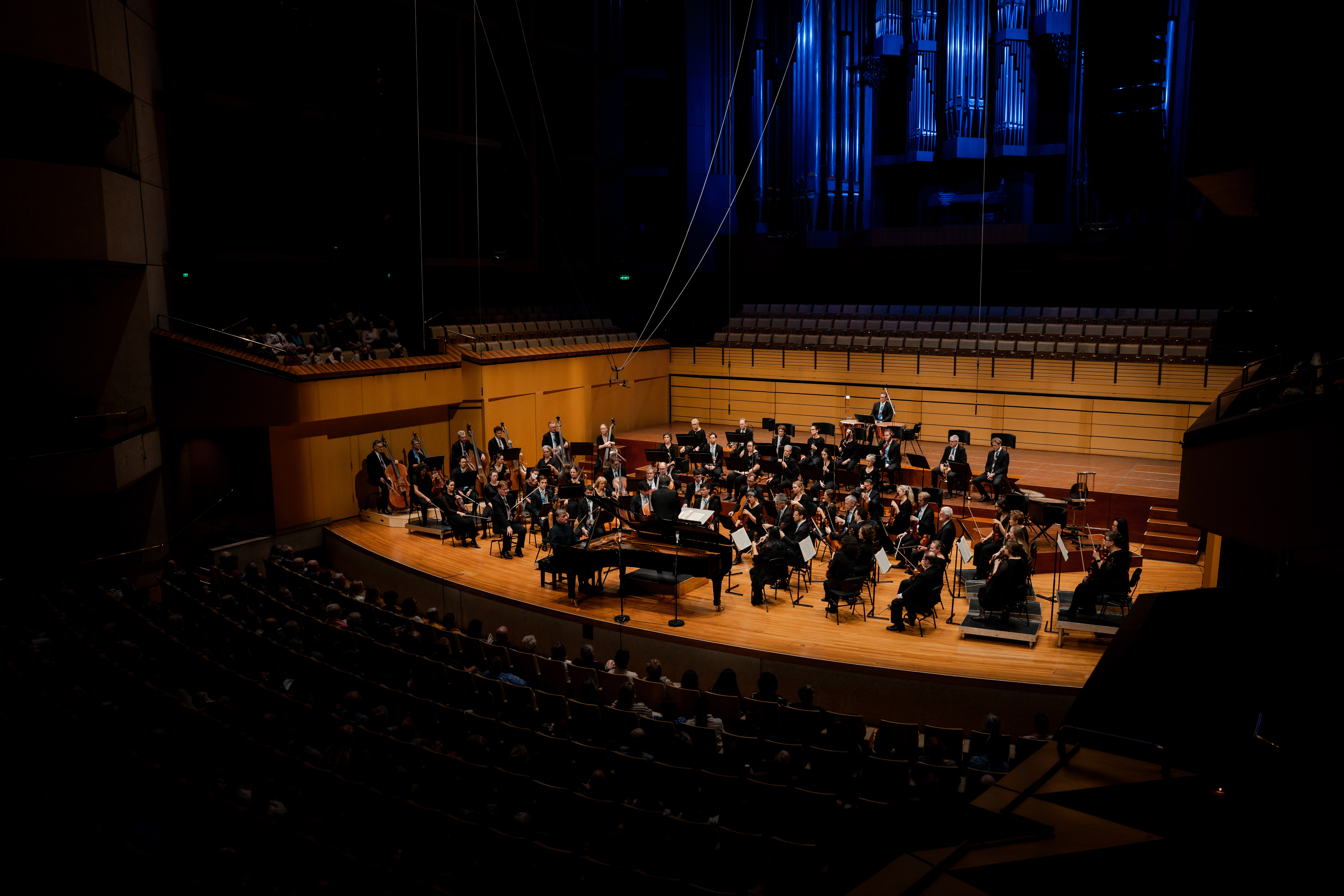Arts Review
Beethoven & Brahms

On Saturday, June 14th, the Queensland Symphony Orchestra (QSO) took the stage at QPAC’s Concert Hall with a program both thunderous and tender, pairing Beethoven’s Symphony No.5 with Brahms’ Piano Concerto No.1. Conducted by Umberto Clerici and featuring the incomparable Sir Stephen Hough on piano, the evening was a vivid reminder that classical music isn’t just a relic—it’s a living, breathing force still shaping our cultural imagination.
The concert opened with Beethoven’s Symphony No.5, and from the first dun-dun-dun-daaa, the audience was hooked. That iconic motif has become cultural shorthand for drama and destiny, echoing through everything from political speeches to pop oddities. Aussie audiences might remember the 2001 McDonald’s “Aquarium” ad—yes, the one that aired on local TV—where a Filet-O-Fish floated dreamily through an underwater world to a cheeky, aquatic twist on Beethoven’s theme. Or The Simpsons, where Nelson Muntz earnestly hammers out the Fifth in a piano recital, his tiny suit and stiff phrasing delivering both parody and homage. These moments prove that even a 200-year-old symphony can sell seafood—or land a punchline. But hearing it live—raw, urgent, unfiltered—was something else entirely. Clerici leaned into its revolutionary spirit, drawing out tension and triumph with cinematic flair. The QSO responded with precision and fire, especially in the surging final movement.
After intermission came Brahms’ Piano Concerto No.1, and Hough delivered a performance that was nothing short of spellbinding. From the first bars, it was clear this wouldn’t be a polite recital but a full-bodied wrestle with the piano—an evocative, almost combative dialogue between artist and instrument. Hough coaxed, challenged, and at times seemed to duel with the keys, drawing out the concerto’s stormy grandeur and lyrical tenderness. His playing was deeply expressive and full of nuance, and the QSO met him every step of the way with lush strings and finely etched winds.
Clerici’s conducting was both authoritative and empathetic. He gave space to Brahms’ sweeping lines while maintaining a clear structural arc. The strings were luminous, and the winds added warmth and color throughout.
The pairing of these two works was especially thoughtful. Brahms once confessed to feeling the “footsteps of a giant” behind him, and placing Beethoven first echoed that lineage. The audience could hear Beethoven’s influence not as imitation, but as homage and evolution.
The evening also reflected QSO’s continued commitment to cultural inclusivity, beginning with a heartfelt Acknowledgement of Country that honored the Turrbal and Yuggera peoples of Meanjin (Brisbane). It was a welcome reminder that music, like land, carries memory and meaning.
And finally, the concert marked a poignant farewell to Wayne Brennan, the QSO’s beloved Section Principal Second Violin. After decades of impeccable playing and quiet leadership, Brennan’s final bow was met with sincere applause—a salute to a musician whose artistry helped define the QSO’s sound and soul.
In the end, it wasn’t just a concert. It was a dialogue across centuries, a celebration of legacy, and a reminder that even the most iconic music still has surprises in store.
Review Written By: Joanna Letic
Imagery: Sam Muller from Sam Muller Media